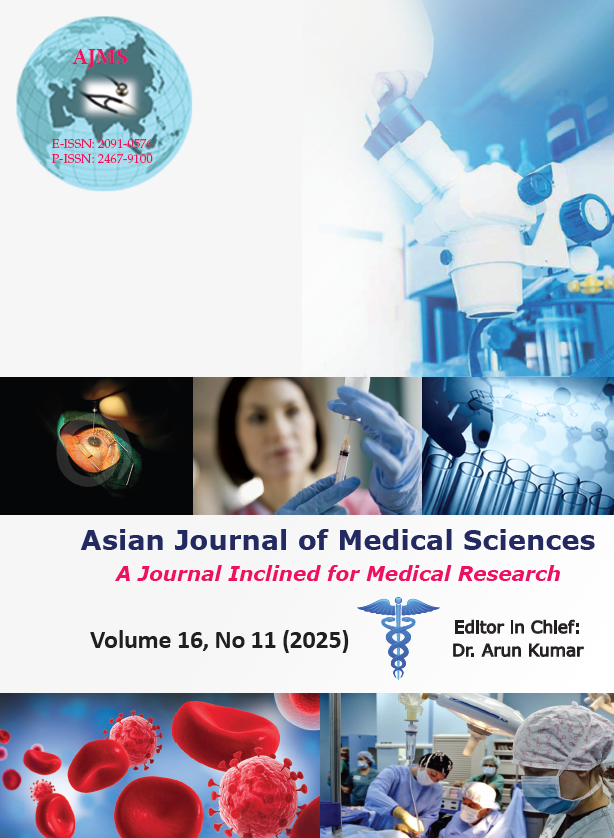Assessment of functional recovery in boxer’s fractures treated by bouquet technique and casting
DOI:
https://doi.org/10.71152/ajms.v16i11.4938Keywords:
Boxer’s fracture; Bouquet technique; Intramedullary K-wire; Cast immobilizationAbstract
Background: Fracture neck of the fifth metacarpal, also known as boxer’s fracture, is the most common metacarpal fracture, accounting for ~36% of cases. Treatment options vary from conservative immobilization to surgical fixation, but there is no clear consensus on the optimal approach.
Aims and Objectives: To compare the functional outcomes of boxer’s fractures treated with antegrade intramedullary bouquet K-wire fixation versus cast immobilization.
Materials and Methods: This prospective study was conducted at the Department of Orthopaedics, Chettinad Hospital and Research Institute, Kancheepuram, after approval by the Institutional Ethics Committee (Approval No: IHEC-1/2475/2). Thirty patients with a fracture neck of the fifth metacarpal were included and randomized into two groups: Group A (bouquet fixation, n=15) and Group B (cast immobilization, n=15). Patients were followed up for 6 months. Outcomes were assessed clinically and radiologically using grip strength, neck-shaft angle, QuickDASH score, and Visual Analog Scale (VAS) pain score.
Results: At 6 months, Group A showed superior outcomes compared to Group B: mean grip strength (107.5±9.4 vs. 82.3±19.3, P<0.001), neck-shaft angle (20.5°±2.5 vs. 24.3°±3.5, P<0.001), QuickDASH score (4.8±2.4 vs.10.2±3.1, P<0.001), and lower VAS scores (P=0.002). All fractures united radiologically within 12 weeks. Complications in Group A included pin tract infection (1 case) and K-wire migration (1 case), while malunion and hand stiffness were more frequent in Group B.
Conclusion: Antegrade bouquet K-wire fixation provides better functional and radiological outcomes with fewer complications compared to cast immobilization in boxer’s fractures. It is a minimally invasive, effective technique with a short learning curve and should be considered as a preferred option in young active patients.
Downloads
Downloads
Published
How to Cite
Issue
Section
License
Copyright (c) 2025 Asian Journal of Medical Sciences

This work is licensed under a Creative Commons Attribution-NonCommercial-NoDerivatives 4.0 International License.
Authors who publish with this journal agree to the following terms:
- The journal holds copyright and publishes the work under a Creative Commons CC-BY-NC license that permits use, distribution and reprduction in any medium, provided the original work is properly cited and is not used for commercial purposes. The journal should be recognised as the original publisher of this work.
- Authors are able to enter into separate, additional contractual arrangements for the non-exclusive distribution of the journal's published version of the work (e.g., post it to an institutional repository or publish it in a book), with an acknowledgement of its initial publication in this journal.
- Authors are permitted and encouraged to post their work online (e.g., in institutional repositories or on their website) prior to and during the submission process, as it can lead to productive exchanges, as well as earlier and greater citation of published work (See The Effect of Open Access).





